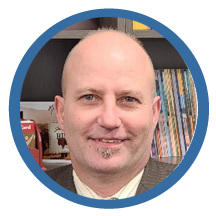Voices from the Region spotlights stakeholders in Region 11 and their work to improve educational opportunities and outcomes. R11CC is privileged to collaborate with and share the insights of Fred Osborn, director of the Office of Indian Education at the South Dakota Department of Tribal Relations. This interview was featured in the R11CC Winter-Spring 2023 newsletter.
 Tell us about your professional role, responsibilities, and goals in your current position.
Tell us about your professional role, responsibilities, and goals in your current position.
My role, which is set by statute, is to support initiatives that help South Dakota students and public educators become aware of and gain an appreciation of our state’s unique American Indian culture. I work in tandem with the South Dakota Department of Education to realize the visions of the 2003 Gathering and Healing of Nations Conference, which identified a need for developing the essential understandings of the nine tribes of South Dakota—they’re called the Oceti Sakowin, which means People of the Seven Council Fires—and to create appreciation and awareness of the Lakota, Dakota, and Nakota tribes, their cultures, and their beliefs.
My goal is to make sure that the Oceti Sakowin Essential Understandings and Standards (OSEUS) are taught in every class, at every school. To do that, I work with the Wóokiye Project—a grant project funded by the Bush foundation—as well as the Department of Education, the Great Plains Tribal Association, and the Regional 11 Comprehensive Center. I meet with schools, instructors, and other associations, and I do trainings.
In the schools in the tribal lands, they’re doing an absolutely amazing job at this. But the key to remember is these essential understandings are for both Native and non-Native students. Part of the work is to get past the notion that it’s just taught for Native children, so I reach out to those other schools and help support them. To give you a little perspective, there’s over 800 elementary, middle, and high schools in our state, and last year we sent five copies of the OSEUS to each one of those schools. I got feedback from principals ranging from, “What is this? I’ve never heard of this,” to “Hey, can you send us another 20.”
What’s your background in education and what drew you to this work?
I hold an MBA from Marylhurst University, and a bachelor’s degree in business administration and a Juris Doctor from Creighton University. I taught over 17 years at the post-secondary level, both traditional and online. I’ve done everything from teaching in the classroom to serving as chief academic officer and Title IX coordinator, and I’ve supervised everything from faculty to academic standards to curriculum development.
When COVID hit, I found an opportunity to move back to South Dakota, my home state. When I looked at this position, it was about implementing something that had been around for 15-16 years and hadn’t fully been developed or realized. That challenge—and it is a challenge, more than I realized—is really what drew me to the work.
How has the Comprehensive Center supported your work?
The Comprehensive Center provides additional tools for my office to support educators. The OSEUS creates a common ground for Region 11, myself, and the Department of Education to focus where our strengths are, assist each other, and have a multifaceted impact on schools.
Working with Region 11, we’ve had these discussions that it’s really about getting into the day-to-day operations. Whether that’s a lesson plan that focuses on the OSEUS or the flag song being played one day a week. Those little things create a culture within a school, and the culture becomes accepting and it becomes nurturing of the teaching of the Native culture and history. And once that happens, it becomes engrained within that school culture, and really that’s the key. It’s the hardest part, but once it happens, it just continues. The students expect it, and they look forward to it.
Part of this is creating those relationships beyond ourselves, and I think that’s really important. What I mean by that is teachers from the Region 11 pilot program and teachers from OIE’s Wóokiye Project are starting to reach out and support each other, and that’s the ultimate benefit. There’s longevity to that even after the grant ends. Basically, you’re developing teacher experts regarding OSEUS instruction, and they then pass those gifts and their best practices on to other teachers, and it spreads. For example, I’m speaking at a symposium where, after hearing about the OSEUS from teachers at the pilot schools, they added the OSEUS to their own teacher professional development day.
What does success look like for your schools and students?
I believe the progress of teaching Native American culture, language, and history is gaining traction. And I think efforts must be made to continue this positive step. We must continue to support teachers and administrators to reach the level that one day an entire generation, both Native and non-Native children, understand the culture of the Oceti Sakowin.
Success happens every day in South Dakota schools. I can tell you that just from talking to teachers. It happens when a Native student is able to learn their history and the culture of their ancestors and they embrace it; it happens when Native children learn their language through the teachings of the OSEUS; it happens when a teacher is able to reach a student through shared learning of Native American history and culture; and it happens when two students, through the teachings of the OSEUS, discover their similarities and learn to appreciate and respect their differences. I want these successes to continue. I want it to snowball. Someday, it should be the norm.
All our success really comes down to the teachers embracing it and being passionate about it, and they really make our work look good. We’re at service to them.
